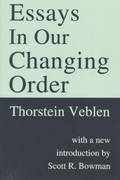The current price of a share of a particular stock listed on the New York Stock Exchange is $39. The following probability distribution shows how the price per share is expected to change over a three-month period: Stock Price Change ($) Probability 0.05 0.10 0.25 + 0.20 +2 0.20 +3 0.10 +4 0.10 a. Construct a spreadsheet simulation model that computes the value of the stock price in 3 months, 6 months, 9 months, and 12 months under the assumption that the change in stock price over any 3-month period is independent of the change in stock price over any other 3-month period. b. With the current price of $39 per share, simulate the price per share for the next four 3-month periods. What is the average stock price per share in 12 months? What is the standard deviation of the stock price in 12 months? C. Based on the model assumptions, what are the lowest and highest possible prices for this stock in 12 months? Based on your knowledge of the stock market, how valid do you think these prices are? Propose an alternative to modeling how stock prices evolve over 3-month periods.1. The market for cigars in New York City is perfectly competitive, with the weekly demand and supply curves given by QD -110 - 10P Qs = 5 +5P A. Using the equations, solve for equilibrium price and quantity in this market. B. Next, graph the demand and supply curves in the grid below. Be sure to indicate equilibrium price and quantity. Check that equilibrium price and quantity in the graph match your answer to part A (above). Price S Market for Cigars 20 19 18 17 16 15 14 13 12 5 10 13 20 25 30 35 40 45 50 55 60 65 70 75 80 85 90 95 100 Quantity of CigarsLabour Markets: Consider a hypothetical market for lowskilled labour. For simplicity, assume the short-run supply of workers is given by the equation Cis 2 10B + 1U w, where Os is the quantity supplied and w is the wage.The demand curve is given by Gd 2 25d 5w, whereCtd is the quantity demanded. 1. Provide some intuition as to why the elasticities are inelastic. 2. Supposethegovernmentweretoimplementaminimumvvage[apriceoorfrthatincreased the wage by 50%. Using your calculated elasticities, determine the response of workers and rms. Conrm these results using the equations for Gs and Gd. 3. Given the original wage {part 1] and the new wage {part 4], use the midpoint method to calculate the price elasticities of sup ply and demand. 4. This results in a surplus of workers. How large is this surplus? 5. Consider the longrun supply of workers. Specifically, suppose individ uais who have not yet entered the workforce see this surplus {unemployment}. How might they respond? Specifically, what substitutes might they identify for working in this market and how might that affect the elasticity of the longrun labor supply curve? 6. Consider the longrun demand for workers How might rms respond to the new wage [part 4} and how will this affect the price elasticity of demand. Suppose this response results in a new demand curve given by Ci'd = ZLD lDw. Calculate the price elasticity of demand at the wage in part 4. i". Suppose the minimum wage did not exist. Find the market equilibrium {price and quantity} given C'Is and G'd [the long -run demand for lowskilled workers. Calculate the price elasticities of supply and demand at this new equilibrium. 1. Using the IS/LM model with unconver interest parity (UIP) to answer the following quations: [suppose that LM curve is positively sloped and future expectation of exchange rate remains constant] [You must draw diagrams.] (a) Suppose that the output of forengin country increases. Show the effect of an increase in on the domestic ocuntry's Y and E under the exible change regime. (25%) (b) Show the effect of an increase in the fopreign interest rateon the domestic country's output Y and exchnage rate E under the exible exchange regime. (25%) (c) Show the effects of an increase in domestic G on the domestic country's output Y and exchange rate under the exiable exchange rate regime. (25%) ((1) Suppose that the deomestic country is under the regime of xed exchange rate. If the output of foreign country Y* increases, what will happen to the domestic country Y and E? (25%)










